- If the gap is quite narrow, consider reapplying the adhesive you previously used. Simply dip a utility knife into the adhesive, then apply it between the drywall and cement board and push it firmly. Otherwise, proceed to the next step.
- Check for some loose screws, if any, and tighten them to hold the surfaces together.
- Measure the seams between the cement board and drywall.
- Cut the drywall tape and apply it along the seams.
- Firmly press the tape to hold it against the seams.
- Apply drywall glue or joint compound along the tape.
- Consider spreading the joint compound at least three inches farther from the tape.
- Allow the joint compound to dry for six hours.
- Apply the second layer of joint compound. This time, spread it 5–6 inches wider.
- Flatten and smoothen the surface until it becomes thin.
- Let it dry for six more hours.
- Now, apply the third layer of joint compound for about eight inches wider than the tape. Leave it overnight.
- Smooth out the surface with sandpaper.
- You can now proceed to tiling or painting the wall.
In this article, we'll learn how to fill in the gaps between the cement board and drywall. We'll even discuss why such things happen and some relevant matters you should be aware of. Let's fill our minds again with a lot of useful information. So, join us in reading!
How to Fill in the Gaps Between Cement Board and Drywall
Cement board is often used as an underlayment for installing tiles. It protects the drywall from getting exposed to water. For instance, you want some tiles on a wall near the kitchen sink. You should install a cement board first to retain the quality of drywall. Otherwise, problems could arise, such as mold growth and rotting.
However, there might be some gaps that will appear between the cement board and drywall. It can be due to a weak bonding agent, loose screws, or incorrect installation. You can consider reapplying the adhesive or tightening the screws. We'll discuss the installation steps later in this article.
What Bonding Agent Should You Use?
Drywall tape is usually made of fiberglass or mesh that's strong enough to hold the cement board. This is your primary treatment for filling the space between the cement board and the drywall.
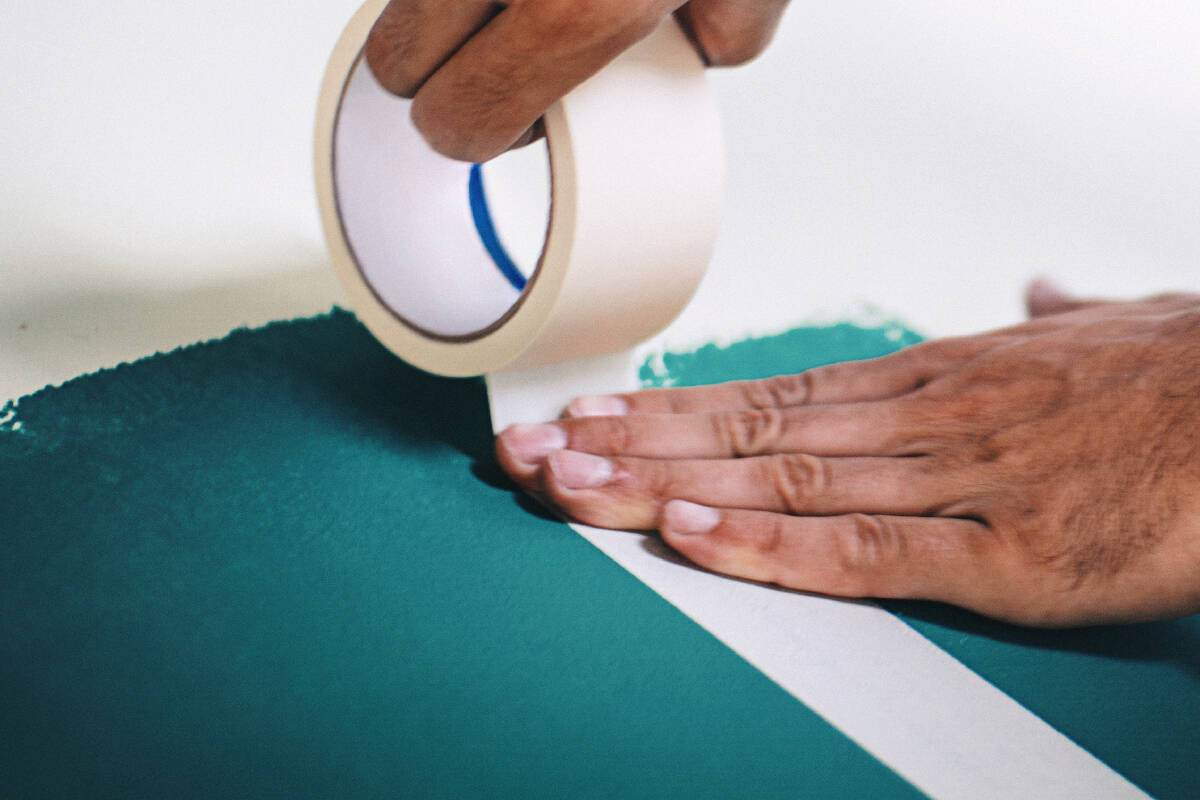
However, you need a strong adhesive to support the drywall tape and hold the two surfaces together. Check below for some bonding agents to use.
Joint Compound
A joint compound is mainly composed of gypsum, giving it a powdery texture. It is white and acts like a paste for the drywall that can take hours to dry.
See this joint compound on Amazon.
Setting Compound
It's similar to a joint compound, but it dries quicker. A setting compound is usually mixed by the manufacturer to be a ready-mix product, so you just need to add water when using it. Also, a setting compound allows you to add layers of it within a day.
Plaster
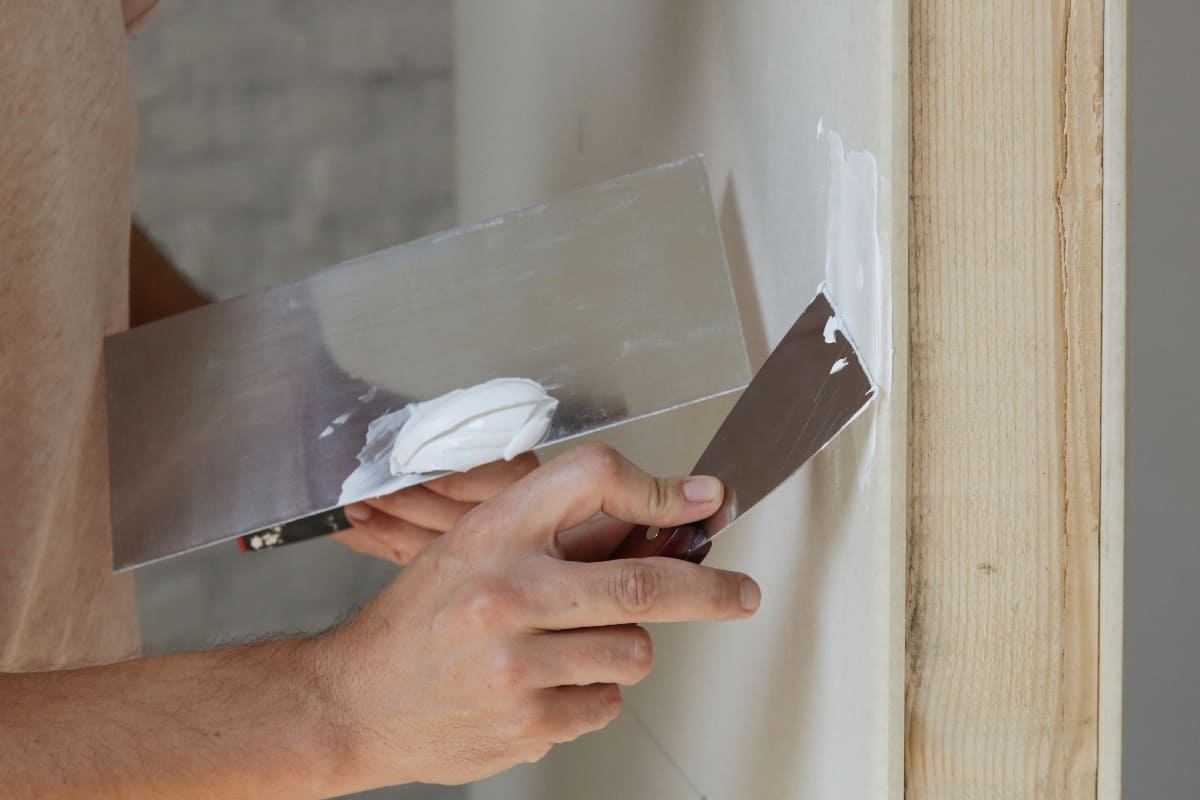
Plaster is composed of gypsum, lime, cement, and sand. It's quite sticky and becomes hard when dried. You'll want the plaster mixture to have a texture similar to white cream. This will result in a firm but flexible adhesion.
Thin-set Mortar
A thin-set mortar is a mixture of cement, fine sand, and retaining agents. It's often used for adhering surfaces such as concrete. However, you might need to paint the thin-set mortar as the dust and other dirt can darken its appearance.
See this thinset mortar on Amazon.
Do You Need Screws on Drywall?
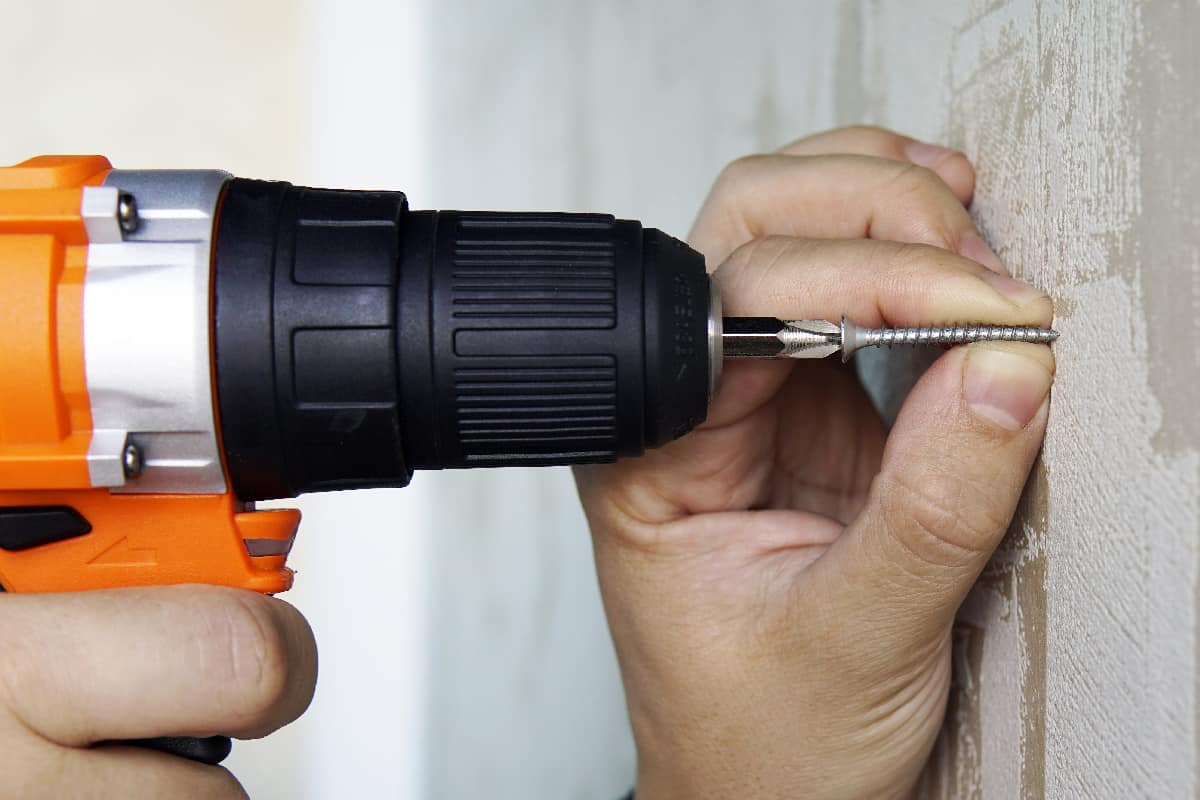
Most homebuilders will tell you to use screws on the drywall to prevent it from dislocating. You will probably need 38 screws for a 4x8 sheet of drywall. Depending on the drywall's thickness, you'll need around an inch or longer screws.
Check below for some types of screws you can use.
Coarse Thread Screws
A coarse thread screw has a wider spiral or thread. It's best to use coarse thread if you will install the drywall against three wooden frames. These screws can pierce through the wood's thickness, holding the drywall firmly and preventing the movements.
See this coarse thread screw on Amazon.
Fine Thread Screws
Compared to a coarse thread, a fine thread has a narrower spiral in its body. You can use fine-threaded screws for metallic surfaces. As a result, the drywall will not slip away from the metal and stay there for longer.
See this fine thread screw on Amazon.
Galvanized Screws
These are actually metallic screws with zinc covering the body. The zinc acts as a protectant against moisture and rusting. Galvanized screws are often used in metallic surfaces, allowing the drywall to be safe from early rot.
See this galvanized screws set on Amazon.
How to Install the Drywall and Cement Board
You'll avoid the inconvenience of seeing the gap between the drywall and cement board if you install them correctly in the very first place. That's why we'll show you how to do it. Check the steps below.
Installing Drywall
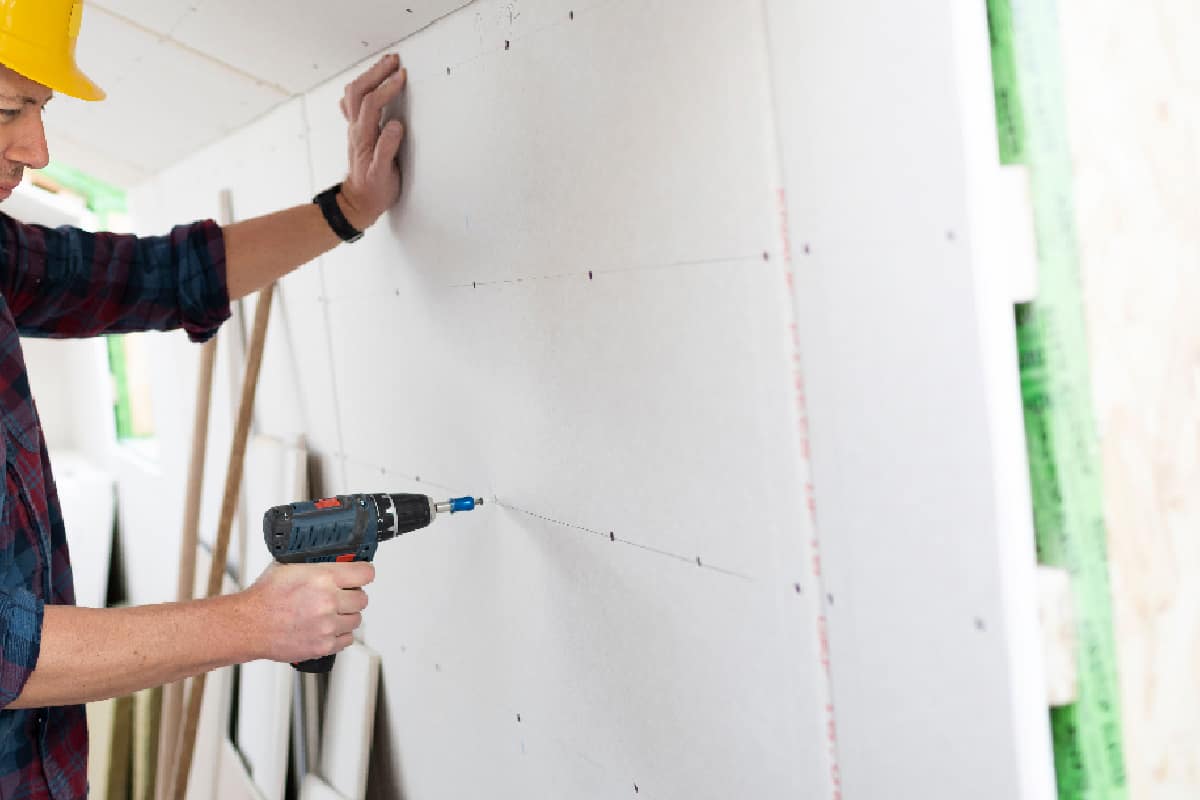
The size of the drywall you need can vary from 4x8 to 4x12 depending on how wide the wall is. It's best to seek a professional to help you with the installation. However, you can refer to the steps below:
- Prepare the wall. You might need to repair some damage, like any cracks or holes.
- Measure and cut the drywall.
- Apply the glue on the wall frame to adhere the drywall.
- Screw the drywall against the wall frame.
- Cut the excess portion with a knife.
- In a clean bucket, prepare and mix the mud until it becomes white, and the consistency of cream.
- Apply the mud solution along the seams to seal the gaps.
- Put drywall tape around the seams.
- Spread the mud with a scraper tool, including the two screws.
- Smoothen the surface with sandpaper.
- Apply a layer of primer and continue sanding the wall.
Installing Cement Board
After you install the drywall, you can now proceed to install the cement board. Cement board often comes in 3x5 foot dimensions. Check the installation steps below:
- Ensure that the drywall is in good condition.
- Measure and cut the cement board.
- Mix a thin-set mortar or any suitable adhesive we mentioned previously.
- Apply the thinset mortar to adhere the cement board.
- Secure the cement board by screwing it along the seams.
- Put mesh tape on the seams, then apply more thinset mortar.
- Spread the mortar along the mesh tape and make it stick with a trowel.
- Proceed to install the tiles.
What Tiles to Use?
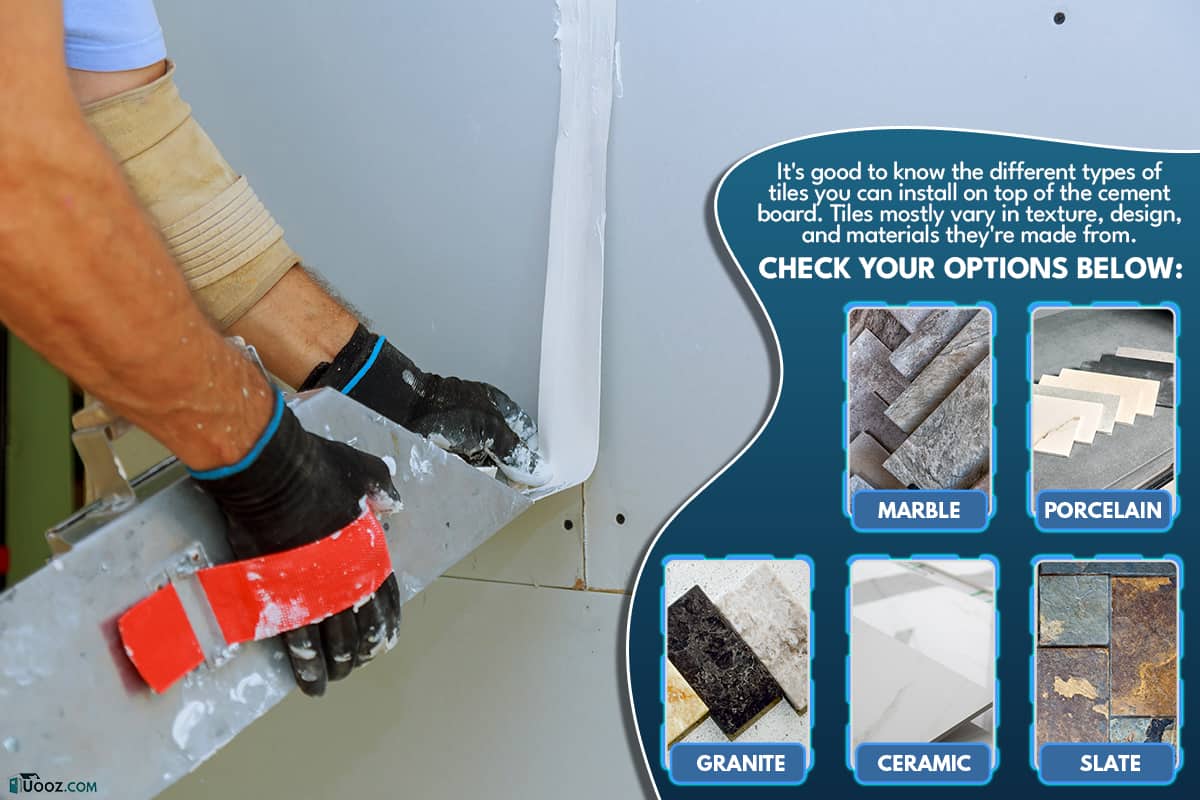
It's good to know the different types of tiles you can install on top of the cement board. Tiles mostly vary in texture, design, and materials they're made from. Check your options below.
Marble
It's made from natural stone, giving you long-lasting durability. Marble tiles often come in white and random brownish designs, making the surface appear elegant. You can use marble tiles on top of the kitchen, even on the floors where most homeowners use
Porcelain
Porcelain and ceramic often share the same appearance and quality. However, porcelain tiles are made from denser clay. Then, the clay is heated up to a high temperature to mold it into a square. As a result, porcelain tiles are strong and can somehow resist burning.
Ceramic
Ceramic tiles are made from clay that comes from a quarry. Similar to porcelain that undergoes the heating process, porcelain is also used in making vases and other materials. Ceramic tiles can be a variety of colors and are popularly used in bathroom areas.
Slate
Slate is a type of metamorphic rock, and slate tiles are cheaper than other tiles. However, being cheap doesn't mean poorer quality. Slate tiles are durable, rough, and mostly black or dark-colored. You can use them to trick the eyes from seeing the dirt due to the tiles' dark, dark dark appearance.
Granite
It is a type of hard, igneous rock, or those that come from lava. Granite tiles are highly fire-resistant. They're ideal for areas with high risks of fire, such as kitchens. You might notice some homeowners having a granite countertop.
Conclusion
We really learned a lot in this article. We listed down the steps on how to fill in the gaps between the cement board and drywall, as well as how to install them. Remember to reapply the adhesive to make the bond stronger.
Are you ready for more articles like this? You can find more here:





